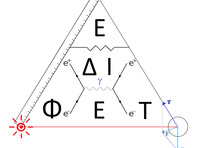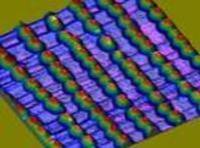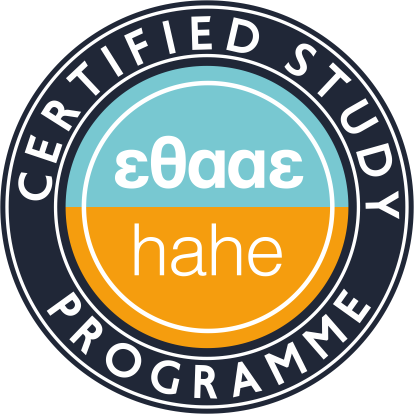Laboratory of Didactics of Physics and Educational Technology

The aim of the Laboratory of Didactics of Physics and Educational Technology (DiPhET), is the application of best practices according to the state of the art in the subjects of Teaching of Physics and Educational Technology, contribute to them through research and their utilization for the benefit of the students of the department (at undergraduate and postgraduate level) and for the professional development of in-service educators.
The Laboratory of Didactics of Physics and Educational Technology (DiPhET). has as mission:
- To provide courses at undergraduate and postgraduate level on the subject of physics education and meet the research needs of the department and other departments of the university in matters that fall within the aims of the laboratory and are part of the study program.
- To provide courses and coordination for the issuance of the Certificate of Pedagogical and Teaching Adequacy of the Department of Physics.
- To train future teachers in the subjects covered by the Laboratory and provisioned by law.
- The coordination of the research of its members, in the fields of teaching of physics and educational technology.
- The cooperation with research centers and academic institutions at home and abroad on common or complimentary objectives.
- The organization of scientific lectures, workshops, seminars, symposia, conferences and other scientific events, of publications and the invitation of Greek and/or recognized scientists from abroad.
- The provision of services in accordance with the provisions of P.D. 159/1984 (Government Gazette53 / t.A '/ 27-4-1984): Conditions for the provision of services by the university laboratories to individuals and all legal organizations.
- The provision of opinions (experts in courts, etc.) on issues related to its expertise in accordance with current legislation.
- The collection, processing, storage and disposal of scientific data.
- The undertaking of consulting or projects and studies to meet the needs of society.
- The publication of scientific journals.
Research Directions
The fields in which the Laboratory is mainly active include the following scientific objects:
- The study of the processes in school classrooms and the modeling of didactic activities in field of natural sciences.
- The development of didactic learning sequences based on inquiry learning and their application for the teaching of Physics and related areas such as Materials Science.
- The study and development of modern forms of educational technology, such as virtual laboratories, simulations, synchronous recording experiments and remote experiments.
- Distance education and the development of online content for the teaching of physics.
The laboratory aims to develop activities such as
- the design and development of teaching aids as well as their implementation in collaborating educational institutions and
- the production, integration in teaching scenarios and evaluation of audiovisual and multimedia teacher material for all levels of education as well as the connection with educational institutions, with scientific bodies and with economic bodies that are active in the field of production of educational material.
Founded: Issue B '4142 / 22.12.2016 GOVERNMENT GAZETTE 40787
DIRECTOR
Euripides HatzikraniotisMEMBERS
RESEARCH ACTIVITY

Quantum dots and nanowires are widely studied due to their potential electrical and/or optical properties.
Their successfull and reproducible fabrication still remains a challenge for the scientists
The scientific activity of our group involves: Atomistic modelling, determination of atom equilibrium positions with simulation methods, electronic state and optical property evaluation.
RESEARCHERS

•Research Activities:
- Cognitive studies in Physics.
- Development of teaching activities (traditional and advanced technology).
- Development of integrated learning environments.
• Equipment:
1. Closed-loop TV circuit with capability of mixing sound and video in digital format (DVD), 4 SONY cameras, ZOOM 6x, video mixing console, U'matic video 3/4 250 lines.
2. Portable color video recorder JV-VHS 250 lines and video camera JVC KY-610, f = 1.4, ZOOM 10x.
3. Stereo color TV set (46").
4. Portable sound mixers (4 & 6 channels), directional and ambient microphones.
5. Devices for demonstration experiments in the fields of Mechanics, Electricity, Magnetism and Fluids.
6. Projectors for still and moving images.
7. A collection of videotapes VHS and DVD with experiments in Physics and a collection videotaped past student presentations.
8. Setups for on line measurements (MBL) and projection of educational activities.
RESEARCHERS

The electrical characterisation process aims to determine the electrical properties of materials and conductive systems as part of the general transport properties of solids. .
The group is specialised in the parametric study of the electrical behaviour of materials and its interpretation when exposed to controlled steady electric and magnetic fields. The parameters include temperature (10 – 300 K), magnetic field (1.4 T), the composition and structure of the materials, as well as the geometry and topography of the samples under test and their electrical contacts.
The characterisation process is based on the online measurement of the electrical conductivity, the Hall Effect and the magnetoresistance of materials, according to the Van der Pauw and Wascher methodologies. .
The group has extensive experience in the characterisation of semiconductors, metals and semi-metals, as well as in the exploration of suitable theoretical models in order to further investigate and expand the methodologies of measurement of inhomogeneous and anisotropic materials. .
RESEARCHERS

Activities:
- Dynamics and Kinetics of disordered solid state systems and fractals.
- Dynamics of neural networks and signal transfer.
- Estimation of electronic and optical properties of conventional and novel semiconductor material with technological applicability.
- Interface study (symmetry, energy and structure features) in polycrystalline materials with lattice model.
- Study of crystallite triplets in polycrystalline materials.
- Estimation of electronic and dynamic properties in crystals, amorphous materials, superlattices.
- Properties and Critical phenomena in ionic crystals.
- Lattice dynamics of crystalline solids (3D and 2D) using phenomenological models and first-principles calculations. Application of group theory for the interpretation of Raman and Infrared spectra.
- Difussion modelling, random walk, complex systems, low-dimensional systems, fractals, trapping events. - Statistical Physics Methodology.
Equipment:
PC Lab with parallel processing. Consists of 32 PCs (Intel Core 2 Duo, 64 processors), Total RAM 128 Gb, Storage Space 6.7 Tb, Operating System Scientific Linux.
RESEARCHERS

The research activities of the Thermal Analysis lab are:
•Thermal characterization of materials in the temperature range –150 till 1750 oC. The studied materials cover a large are such as: semiconductors, magnetic materials, rocks, polymers, ceramics, biomaterials etc.
•Kinetic study of amorphous materials
•Kinetic study of phase transformation and decomposition
And specifically with:
•Thermal characterization of polymers - biocompatible polymers - nanocomposite polymers. Kinetic study of the crystallization of these materials. Study of thermal stability and kinetics of thermal degradation.
•Study of metal’s oxidation, coatings oxidation in high temperatures. Kinetic study of oxidation.
The equipments of the Thermal Analysis lab are:
1.Differential Scanning Calorimeter (DSC), SETARAM-DSC 141, which covers the temperature area –150 till 550 oC
2.Thermogravimetry (TGA), SETARAM SetSys 16/18 TG-DTA, which covers the temperature area 20 till 1750 oC
